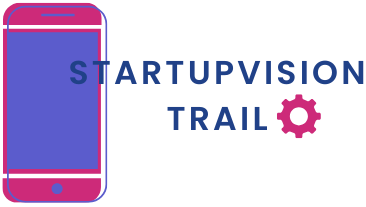Table of Contents
ToggleIn a world where software often feels as elusive as a unicorn, Software as a Service (SaaS) companies have swooped in like tech superheroes. They’re the ones serving up applications over the internet, making life easier for businesses and individuals alike. Forget the days of clunky installations and endless updates; SaaS lets users access powerful tools anytime, anywhere, with just a click.
But what exactly makes these companies tick? They provide a subscription-based model that’s as appealing as a bottomless coffee cup. Whether it’s managing projects, handling customer relations, or crunching numbers, SaaS solutions are the Swiss Army knives of the digital age. So buckle up as we dive into the fascinating world of SaaS companies and discover why they’re the go-to choice for modern-day problem solvers.
Overview of SaaS Companies
SaaS companies deliver software applications via the internet. This model simplifies software access for users. Many businesses prefer SaaS because it eliminates the need for local installations or maintenance. Through a subscription-based model, users benefit from predictable pricing and regular updates.
Operational efficiency stands out as a key advantage. Firms can quickly scale their usage based on needs. For example, a startup may initially require a few licenses, while an established enterprise might need hundreds.
Collaboration tools exemplify SaaS offerings, enabling teams to work simultaneously from various locations. Popular applications, such as Google Workspace and Microsoft 365, illustrate this functionality effectively. Users gain access to updated features without manual intervention.
Security measures play a vital role in SaaS companies. Providers typically invest in robust security protocols to protect sensitive data. They also handle backups and other essential IT tasks, allowing businesses to focus on growth rather than infrastructure.
Industries across the board leverage SaaS solutions. Health care organizations implement SaaS for patient management, while retail companies use it for inventory tracking. Flexibility in deployment options often accommodates unique business requirements.
SaaS companies frequently lead innovation in technology. Artificial intelligence integrations and advanced analytics are now common in many applications. These features enhance productivity and decision-making, making SaaS an integral part of modern business operations.
Key Characteristics of SaaS Companies
SaaS companies exhibit several distinct characteristics that define their business model and offerings.
Subscription-Based Model
A subscription-based model serves as a hallmark of SaaS companies, providing users with predictable expenses. Customers pay a recurring fee, which can range from monthly to annually, for continuous access to software applications. This approach eliminates hefty upfront costs often associated with traditional software purchases. Additionally, companies benefit from regular feature updates without manual installations. Many users find this model appealing due to its flexibility, allowing them to adjust subscription levels as business needs change.
Cloud Hosting
Cloud hosting forms the backbone of SaaS solutions, enabling easy access to applications from any device with internet connectivity. This infrastructure allows providers to host applications remotely, which minimizes the need for extensive local resources. Users can securely access their software and data at any time. Moreover, this decentralized hosting significantly enhances scalability, accommodating varying user demands without compromising performance. With cloud hosting, businesses streamline operations and improve collaboration among teams.
Multi-Tenancy Architecture
Multi-tenancy architecture characterizes SaaS platforms, offering a single instance of the software to serve multiple users. This design facilitates cost efficiency and resource optimization, as maintenance and updates occur in one location rather than across individual systems. Different users can benefit from the same software environment while ensuring data security and privacy. Consistent features across various customer accounts enhance user experience and simplify management for providers. In summary, multi-tenancy enables SaaS companies to deliver high-quality service to diverse client bases effectively.
Benefits of SaaS Companies
SaaS companies offer numerous benefits that make them appealing for businesses of all sizes. Key advantages include cost efficiency, scalability, and accessibility, which contribute to streamlined operations.
Cost Efficiency
Cost efficiency is a primary benefit of SaaS companies. Subscription-based models reduce upfront financial burdens associated with software purchases. Users can pay monthly or annually, allowing for budget predictability. Maintenance costs are often lower, as providers handle updates and support. This arrangement enables organizations to allocate resources more effectively across various projects. Additionally, many SaaS applications require minimal hardware investments, meaning savings on both infrastructure and IT staffing.
Scalability
Scalability marks another significant advantage of SaaS companies. Businesses can easily adjust their subscriptions to match evolving demands. This flexibility allows organizations to scale up or down based on project needs or user requirements. Resources are allocated automatically, ensuring that businesses access necessary features without complex modifications. Moreover, SaaS solutions can support growing teams, as additional users can be added with a few simple clicks. Such adaptability enhances operational efficiency, making it easier to respond to market changes or shifts in strategy.
Accessibility
Accessibility is a standout feature of SaaS companies. Users can access applications from any device with internet connectivity, ensuring seamless operation in various environments. Teams located in different geographical locations can collaborate effectively without barriers. Moreover, updates are deployed automatically, granting users access to the latest features without disruptions. This convenience improves productivity, as employees stay connected and engaged throughout their work processes. Organizations benefit from enhanced coordination and quicker decision-making, enabling them to respond promptly to opportunities.
Challenges Faced by SaaS Companies
SaaS companies encounter several challenges that can impact their operations and reputation. Two significant concerns include data security and downtime issues.
Data Security Concerns
Data security stands as a primary challenge for SaaS companies. They must navigate threats like data breaches and unauthorized access. Substantial resources go into implementing encryption, firewalls, and regular security audits. Companies rely on these measures to protect sensitive client information. Many clients seek reassurance about compliance with regulations like GDPR and HIPAA. Maintaining transparency about security practices proves vital in building trust. Additionally, companies face the risk of reputational damage following a breach. Ensuring robust security protocols can enhance user confidence and safeguard brand integrity.
Downtime Issues
Downtime issues often create significant headaches for SaaS companies. Service interruptions can happen due to technical failures or maintenance activities. Users expect consistent access to applications, and any disruption can lead to frustration. A 99.9% uptime is generally viewed as a standard benchmark by customers. Achieving this target requires effective monitoring and quick response protocols. Service-level agreements (SLAs) play an essential role in setting expectations for uptime and issue resolution. Mitigating the risks associated with downtime through redundancy and failover strategies can strengthen reliability. Maintaining open communication during outages helps to preserve customer trust.
SaaS companies represent a transformative shift in how software is delivered and utilized. By prioritizing accessibility and efficiency they empower businesses to adapt quickly to changing demands. The subscription model not only alleviates financial burdens but also enhances operational flexibility.
As industries continue to leverage these solutions the importance of robust security measures and compliance cannot be overstated. SaaS providers must remain vigilant against potential threats while ensuring seamless service delivery. With ongoing advancements in technology SaaS companies are poised to drive innovation and productivity in the digital age. Their ability to provide scalable solutions makes them indispensable partners for businesses looking to thrive in a competitive landscape.





